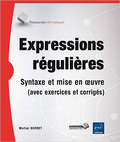Unix |
Unix v6 |
|
 |
cron(8) |
 |
cron clock daemon executes commands at specified dates
and times according to the instructions in the file
/usr/lib/crontab. Since never exits, it should only be
executed once. This is best done by running from the
initialization process through the file /etc/rc; see (VIII).
Crontab consists of lines of six fields each. The fields are
separated by spaces or tabs. The first five are integer
patterns to specify the minute (0-59), hour (0-23), day of
the month (1-31), month of the year (1-12), and day of the
week (1-7 with 1=monday). Each of these patterns may contain
a number in the range above; two numbers separated by a
minus meaning a range inclusive; a list of numbers separated
by commas meaning any of the numbers; or an asterisk meaning
all legal values. The sixth field is a string that is
executed by the Shell at the specified times. A percent
character in this field is translated to a new-line
character. Only the first line (up to a % or end of line) of
the command field is executed by the Shell. The other lines
are made available to the command as standard input. Crontab
is examined by every hour. Thus it could take up to an hour
for entries to become effective. If it receives a hangup
signal, however, the table is examined immediately; so
‘kill −1 ...’ can be used.
/usr/lib/crontab init(VIII), sh(I), kill (I) None −
illegal lines in crontab are ignored. A more efficient
algorithm could be used. The overhead in running is about
one percent of the machine, exclusive of any commands
executed.
 |
cron(8) |
 |





